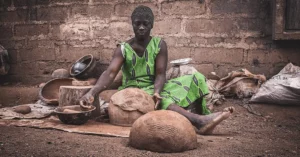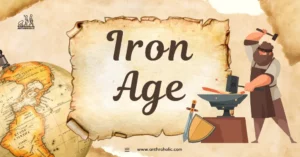AI Answer Evaluation Platform Live Now. Try Free Answer Evaluation Now
Archaeogenetics
According to Colin Renfrew, the application of molecular population genetics approaches to the study of human evolution is referred to as “archaeogenetics.” To explore human history and the genetic legacy of human involvement with the environment, it is practical to evaluate “ancient DNA,” DNA from current populations (including humans and domesticated plant and animal species), and DNA acquired from archaeological remains.

Analyzing historical data using statistical tools provided by molecular geneticists
The challenge was spurred by studies on blood types and the realization that shared genetic markers might give insights about the relationships between linguistic and ethnic groups. Ludwik and Hanka Hirszfeld, Arthur Mourant, and William C. Boyd were early specialists in the area. After years of research on Europe’s ancient population, Luca Cavalli published The History and Geography of Human Genes in the 1960s.In 1994, it was published. Since then, specialists have analyzed the genetic history of all significant domesticated animals, including cattle, goats, pigs, and horses. However, new evidence is being investigated to support the genetic account.
Intellectual trend in Archaeogenetics
Antonio Amorim made a similar statement in 1999 about acquiring and analyzing [genetic] evidence of human history. Similar to DNA but more ambitious as it covers the regeneration of apparently dead states, Linus Pauling and Emile Zuckerkandl provided a theory before DNA was identified (although in a more ambitious form, since it contained the regeneration of presumably dead states) (but in a more ambitious form, since it encompassed the regeneration of supposedly dead states)
Methods in Archaeogenetics
Using cutting-edge technology like genome-wide DNA sequencing, archaeogenetics is the study of genetic material that has been preserved in historical artifacts. Researchers research the population genetics of people, plants, animals, and even microbes to learn more about their geographic origins, natural selection processes, genetic structure, and historical and current relationships. Paleogenomics and ancient genomics are commonly used interchangeably with “archaeogenetics.”
Archaeogenetics with other branches of Anthropology
With an emphasis on archaeology, the branch of study known as “archaeogenetics” integrates the humanities with the physical sciences, particularly genetics (primarily archaeology) or mostly archaeology (mainly archaeology). As a result, it not only creates additional ethical difficulties on top of those that are already prevalent in every organization, but it also promotes employee distrust. How can we, for instance, find a balance between the need to safeguard archaeological items as cultural resources and the requirement to sample them destructively for research? When our data analyses clash with group identities and oral histories, how can we reconcile the competing interests of stakeholders? What “genetic heritage” theories may be explored and communicated without contributing to false ethnic or national myths?
Archaeogenetics and molecular genetics -New studies in Archaeogenetics
In reaction to inquiries about the early history of the human population, molecular genetics has been applied to basic issues in ancient archaeology, giving origin to the word “archaeogenetics.” Due in part to the fact that many professionals placed a lot of focus on archaeology in Europe in the nineteenth and twentieth centuries, many elements of its usage up to this point have been tied to ancient Europe[1]. Furthermore, the structuring that resulted from an early principal components analysis of the traditional genetic markers for Europe and the clarification of the chronological patterning that emerged as farming spread across Europe at the start of the Neolithic period can both be partially attributed to the early application of a particular demographic model, the “wave of advance.”[2] Several new issues have already been identified when male and female lineages have been explored using the Y chromosome and mtDNA, respectively. This has led to a lot of controversy.[3] Thus, the time period is best suited for in-depth regional studies that focus on specific historical concerns. A key new study by Wilson and others[4] in this edition of PNAS is based on one of these early demographic occurrences, the Viking invasion of the Orkney Islands in the ninth century A.D. However, it raises a range of additional, more serious issues connected to evolving demographic histories.
See Also
References
[1] C Renfrew Archaeogenetics: DNA and the Population Prehistory of Europe, eds C Renfrew, K Boyle (McDonald Institute, Cambridge, U.K.), pp. 3–12 (2000).
[2] A J Ammerman, L L Cavalli-Sforza The Explanation of Culture Change: Models in Prehistory, ed C Renfrew (Duckworth, London), pp. 343–58 (1973).
[3] P A Underhill, P Shen, A A Lin, L Jin, G Passarino, W H Yang, E Kauffman, B Bonne-Tamir, J Bertranpetit, P Francalacci, et al. Nat Genet 26, 358–361 (2000).
[4] J F Wilson, D A Weiss, M Richards, M G Thomas, N Bradman, DB Goldstein Proc Natl Acad Sci USA98, 5078–5083,. (First Published April 3, 2001; 10.1073/pnas.071036898). (2001).




